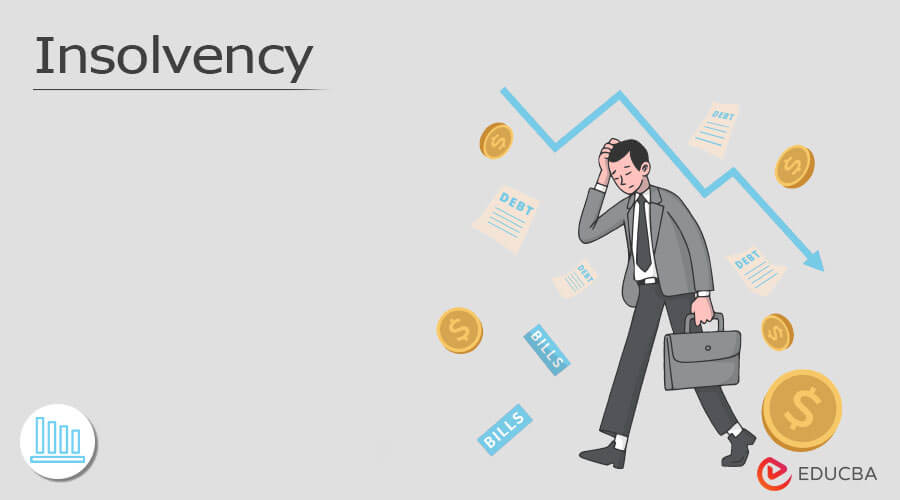The smart Trick of Insolvency Practitioner That Nobody is Talking About
The smart Trick of Insolvency Practitioner That Nobody is Talking About
Blog Article
The Definitive Guide to Insolvency Practitioner
Table of ContentsThe 25-Second Trick For Insolvency PractitionerNot known Facts About Insolvency PractitionerHow Insolvency Practitioner can Save You Time, Stress, and Money.Insolvency Practitioner Things To Know Before You Get ThisInsolvency Practitioner - An OverviewAbout Insolvency PractitionerThe Best Strategy To Use For Insolvency Practitioner
Bankruptcy is when liabilities are higher than the worth of the firm, or when a borrower can not pay the financial obligations they owe. A company can become financially troubled because of a variety of scenarios that lead to bad capital. When faced with insolvency, a business or person can speak to creditors directly and restructure financial debts to pay them off.Bankruptcy can lead to insolvency procedures, in which lawsuit will be taken versus the bankrupt individual or entity, and possessions might be liquidated to settle arrearages. Business owners may contact creditors directly and restructure debts right into even more convenient installations. Financial institutions are generally open to this method because they want to be repaid and avoid losses, also if the settlement gets on a delayed timetable.
The 25-Second Trick For Insolvency Practitioner
The owner develops a proposition describing how the financial debt may be reorganized using price reductions or various other plans for support. The proposition shows lenders how business may produce adequate capital for successful procedures while paying its debts. Typically, a forgiven financial obligation might be taken into consideration income by the Internal Profits Service (IRS).

The Greatest Guide To Insolvency Practitioner
When procedures cease, so does the company's earnings (Insolvency Practitioner). Some firms become financially troubled because their products or solutions do not evolve to fit consumers' altering requirements.
Costs go beyond revenues and bills stay overdue. Kinds of bankruptcy include cash-flow insolvency and balance-sheet insolvency. Cash-flow insolvency happens when a business has the possessions to cover their financial debts yet they are in the wrong form, such as realty as opposed to liquid funds. Balance-sheet insolvency, on the other hand, indicates a lack of possessions in any type of form to cover financial obligations.
The internal revenue service states that a person is insolvent when the overall obligations exceed total possessions. A insolvency, on the other hand, is an actual court order that depicts how a financially troubled person or business will repay their lenders, or just how they will certainly offer their assets in order to make the settlements.
3 Simple Techniques For Insolvency Practitioner

Debt combination is when you incorporate numerous car loans into one new funding, usually to attain far better terms. Bankruptcy is not the like personal bankruptcy, although a company that has Recommended Site become insolvent might apply for bankruptcy. Insolvency is the state of not being able to pay your responsibilities while personal bankruptcy is a lawful process to release your financial debts.
Understanding the factors that can cause insolvency, such as overspending, can aid you stop insolvency and its repercussions.
9 Simple Techniques For Insolvency Practitioner
It is popular that directors and police officers of companies (and supervisors of minimal obligation firms) owe fiduciary tasks to their companies and their investors (or participants). These fiduciary obligations are defined by state statutes and, though there are variations from one state to another, they usually consist of an obligation of loyalty and a task of treatment.
The obligation of treatment requires directors and policemans to exercise persistance, to make enlightened choices, and to act in good belief to make sure that their activities remain in the ideal rate of interest of the business. Beyond the range of this discussion, some states enable these duties to be limited either by so noting in the business documents or complying with other needs.
Insolvency Practitioner Fundamentals Explained
Most states specify bankruptcy in two ways( helpful resources 1) when a firm's responsibilities come to be higher than the sum of its possessions or (2) when the business becomes incapable to pay its financial debts as they come to be dueand accept both definitions (Insolvency Practitioner). The change in duties occurs since when a business is bankrupt, there is no worth in the business past that owed to the business's creditors so that the equity owners no longer have a financial stake in the firm
Be mindful regarding offering shareholders favoritism at the expenditure of lenders (e.g., licensing and moneying a dividend or a supply redemption). Beware about special treatment between courses of investors. Clear up initiatives to find out all the realities before taking a details course of activity; supervisors must really believe that any decisions made remain in the ideal interests of the firm in its totality (i.e., choices will certainly be examined in hindsight because of the impact of such actions on the firm).
In any kind of insolvency or insolvency proceeding, settlements made to specific lenders at the expense of various other financial institutions can be click here for info clawed back, especially if there is some link between the firm and the lender. Take into consideration suggesting at an annual investor meeting (or any other meeting of investors) a resolution verifying that all prior organization decisions and actions taken by the supervisors and policemans of the corporation were taken in good confidence after an exercise of practical treatment.
What Does Insolvency Practitioner Do?
Totally divulge any individual or business connections with parties beyond of transactions including the firm to prevent the look of a conflict of interest. In assessing possible fund elevating purchases or a sale of properties of the distressed company, realize that these purchases might be inspected later taking into account any subsequent development of supervisors' fiduciary duties to include financial institutions.
Report this page